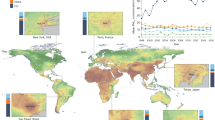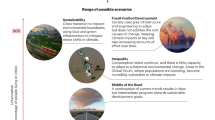Abstract
THE amusing definition of a specialist as “one who learns more and more about less and less” does not hold for the specialist in applied science. On the contrary, so far as I have observed in applied biology, it is a curious paradox that concentration on a single problem often requires the widest superficial knowledge of many subjects. For example, for the past three years I have been studying the effect of new insecticides on the louse. That would appear to be a fairly specialized problem requiring merely a familiarity with the biology of the louse and the physical and chemical properties of the organic chemicals proposed as insecticides. Actually the research led to a consideration of such diverse subjects as the psychology of the louse (and to some extent of the infested men who came to us for treatment), the risks of dermatitis from various chemicals and the possible carcinogenicity of oil diluents. The powers of absorption and retention of cotton, wool and cellulose acetate underwear were considered, and practical problems of laundering and dry-cleaning (especially the preparation of emulsions and the use of large centrifuges) came into the picture. Finally, one had to learn a little of such diverse subjects as army hygiene and women's hair-dressing styles.
This is a preview of subscription content, access via your institution
Access options
Subscribe to this journal
Receive 51 print issues and online access
$199.00 per year
only $3.90 per issue
Buy this article
- Purchase on Springer Link
- Instant access to full article PDF
Prices may be subject to local taxes which are calculated during checkout
Similar content being viewed by others
References
Tattersfield, F., Ann. Appl. Biol., 26, 365 (1939).
Cotton, R. T., J. Econ. Entom., 25, 1088 (1932).
Tattersfield, F., and others, J. Agric. Sci., 10, 199 (1920); 17, 181 (1927).
Tattersfield, F., and others, Ann. Appl. Biol., 12, 218 (1925); 13, 424 (1926).
Ferguson, J., Proc. Roy. Soc., B, 127, 387 (1939).
Busvine, J. R., NATURE, 150, 208 (1942).
Hazelhoff, E. H., Z. vergl. Physiol., 5, 179 (1927).
Wigglesworth, V. B., Bull. Ent. Res., 33, 205 (1942).
Krüger, F., Z. d. angew. Entom., 18, 344 (1931), and others.
Hurst, H., NATURE, 145, 462 (1940).
Clark, A. J., "The Mode of Action of Drags on Cells" (London: Arnold and Co., 1935).
Author information
Authors and Affiliations
Rights and permissions
About this article
Cite this article
BUSVINE, J. THE SEARCH FOR NEW INSECTICIDES. Nature 151, 690–692 (1943). https://doi.org/10.1038/151690a0
Issue Date:
DOI: https://doi.org/10.1038/151690a0
Comments
By submitting a comment you agree to abide by our Terms and Community Guidelines. If you find something abusive or that does not comply with our terms or guidelines please flag it as inappropriate.



